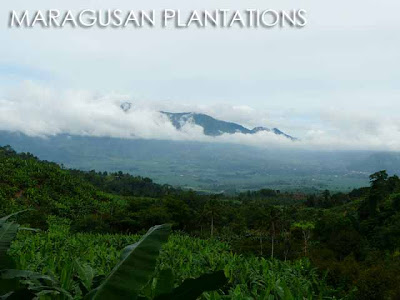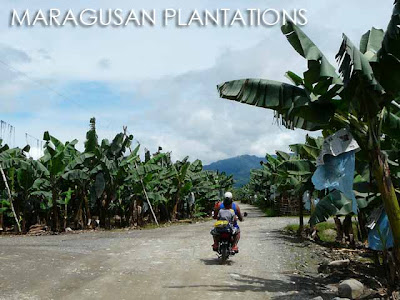
If there was a hidden paradise in the Philippines, it must be the Agusan Marsh. That's because visiting it is no walk in the park since it requires several hours of land and river boat travel to get to the marsh itself. Arranging the pump boat ride would also require some effort and a lot of funds too if you don't have the right connections. But no doubt, the Agusan Marsh is paradise.
In fact, it is such an important part of our natural heritage, the Agusan Marsh Wildlife Sanctuary is among four Philippine sites in the Ramsar List of Wetlands of International Importance. I hope the local community there initiates moves for its inscription in the UNESCO World Heritage List.
Much of the Agusan Marsh is ancestral domain of the Manobos. So to get into some of the better portions of the marsh might require permission from the local community. There are several communities in the Agusan Marsh and a lot of ways to get there. I was lucky to be a guest of the Manobo community in Sitio Panlabuhan, Loreto, Agusan del Sur. In fact, they hosted me for one night.

A trip to Agusan Marsh starts with land travel from the nearest airport which could either be Davao or Butuan. That would take several hours depending on where you are coming from. The jump-off point for the river boat ride is Bunawan, Agusan del Sur. From the pantalan of Bunawan, it took another three-hours on a pump boat to reach Sitio Panlabuhan in Loreto, Agusan del Sur.

We actually had to change boats when we neared the entrance of the marsh since in October, pump-boats have a hard time entering Sitio Panlabuhan due to the high concentration of lilies, hyacinths and other water plants. People say it looks like an enormous green quilt.
It was quite an experience riding on the boats made from hollowed-out logs as we pushed our way through the lilies. And especially since one wrong move meant an unplanned swim in the dark tea-colored water of the marsh.

The Manobos in the Agusan Marsh live in floating houses. The houses, which are quite sturdy, are built on hundreds of pieces of bamboo and rise and fall together with the level of the marsh. And depending on the current, the houses are also moved to different locations.
Take note also that there is no electricity. So you really commune with nature while you are there. Interestingly though, the mobile phone signal was very strong in Sitio Panlabuhan.
I was also quite surprised that they community had a lodge where visitors could stay. They don't come in very often. But at least visitors don't have to worry about accommodation. I was warned that mosquitoes would be a problem even with the mosquito net or kulambo. So make sure to bring a lot of insect repellent.

The community of Sitio Panlabuhan has two sectors. After settling down, we boarded the log boat to proceed to the main sector where a newly-constructed floating classroom is located. As part of required tradition, I had to meet the community elders for a Manobo ritual to pay respect to the spirits, ask permission for my presence and request for safe passage while I was there. I was told that some visitors who simply entered the ancestral area without doing the ritual met a disaster of some sort, even as they arrived back home.

I was actually asked to bring a live chicken and candles for the ritual. But the village elder decided not to sacrifice the chicken. So we offered an egg instead. The ritual began with the elder conversing with the spririts, mentioning that I was in the community. On the table was lighted candle, the egg cracked open on a plate, a bottle of beer plus a glass with a serving of beer, and a lighted cigarette. After the conversation, the village elder stood up, took the glass of beer, proceeded to the window and emptied its contents into the marsh. Then the glass was filled-up again and again and passed around so that everyone in the room was able to drink.
After the ritual, we had a town hall meeting with the community to discuss plans to open their community to tourism. They wanted visitors to come and were very frustrated with the local government because they never benefited from any of the visitors who came into Sitio Panlabuhan. Some foreigners were even rude enough to say they already paid the LGU when prohibited from entering the ancestral domain, not knowing that the community had rights to their part of the Agusan Marsh.

I've always been telling my students that tourism is a powerful tool for poverty alleviation of government makes sure that its benefits reach the grassroots. This is my way of helping the community around the Agusan Marsh benefit from tourism. So in February, we will be organizing a tour of Sitio Panlabuhan that will benefit the community directly. Tourists will have a chance to stay with the community for a night or two. If you are interested to join the tour from March 4-6, 2011, please e-mail info@ivanhenares.com so I can send you more details as they come.
Anyway, the sun had just set when we took the boat back to the opposite sector. After dinner and some lively discussions on the planned tourism program, we called it a night.

The next morning, I was up early since they community wanted to show me the floating gardens. These were literally floating plant boxes where they would have flowering plants, fruits and vegetables. Unfortuantely, I did not have time to join any of the fishing activities since I wanted to be back in Bunawan before lunch to catch a bus to Surigao del Sur.


Aside from joining the locals go fishing around the marsh, bird watching is also another activity of the Agusan Marsh being host to over 200 species of birds. The numbers swell especially during the cold months when the marsh hosts communities of migratory birds.


















